Introducing Reactive Components in Screen Flows
Contributor: Jothilaxmi
Reactive components coming to Screen Flows (currently in Beta). With reactive components, the supported components in screen flow react to changes in other components on the same screen. Previously, components on the same screen couldn’t talk to each other, so if you needed one component to influence another, you placed them on separate screens. Now you can build screens that feel like single-page applications and reduce the number of screens for your user.
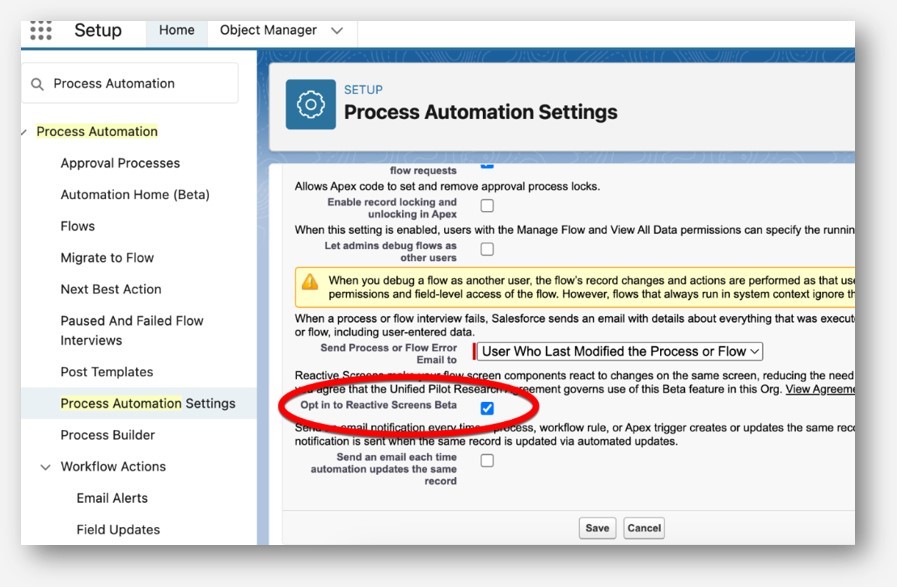
Test your IQ
Identify him and movie name

Answer to Previous Question
Knit all these to find a 48-year-old movie! Every one of you would know this!!


Answer: Sholay
Verify Ownership of Salesforce Domain & Bypass User Level Check
Contributor: : Sivasai
You can bypass the user-level email address verification status check if you prove that you own the email sending domain. Salesforce verifies ownership of sending domains using DKIM keys.
This method helps SSO users better manage Salesforce email sends by ensuring that email sends passed email verification. The status check occurs at the time of the send, and you can still receive email verification emails, as this setting doesn’t prevent the sending of these emails. This configuration benefits SSO users who own their specific domain.
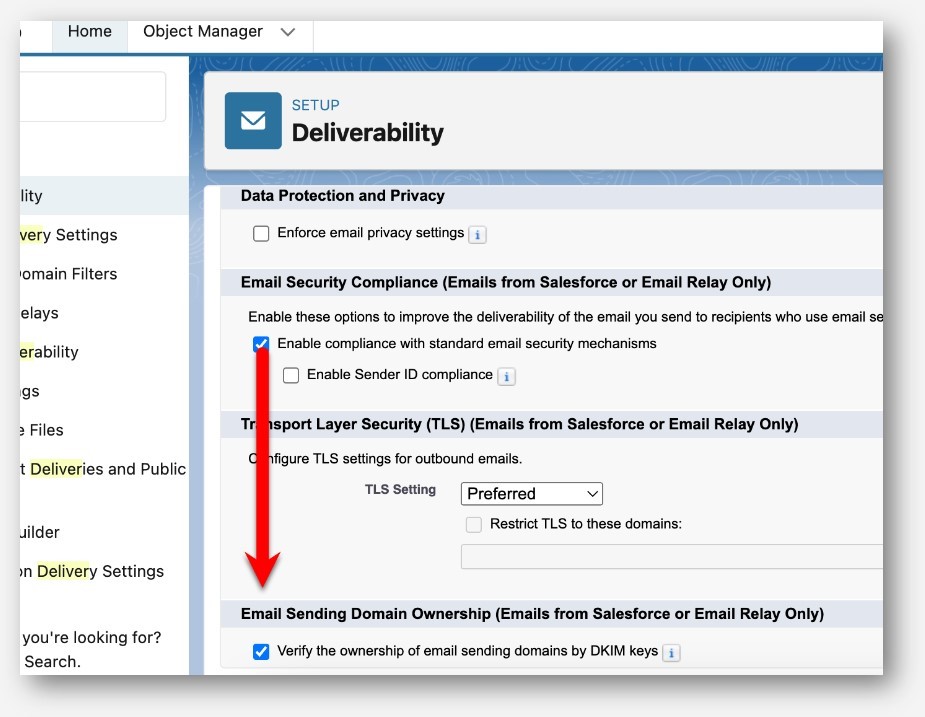

Test your IQ
Identify the English word hiding here, and which is this form of ‘writing’?


Answer to Previous Question
Identify him and movie name



Answer: Tom cruise, Mission Impossible
My Domain Setting Changes in Audit Trail
Contributor: : Ramya
In the Setup Audit Trail, there are new EVENTS to track when an admin
a) saves a change to your My Domain details
b) cancels a provisioned My Domain change, or
c) removes a previous My Domain
The audit trail also captures when a user enables Salesforce Edge Network. When an admin deploys a new My Domain, the audit trail includes the new My Domain name and whether enhanced domains are enabled. Also, several existing events related to other My Domain settings are updated for clarity.
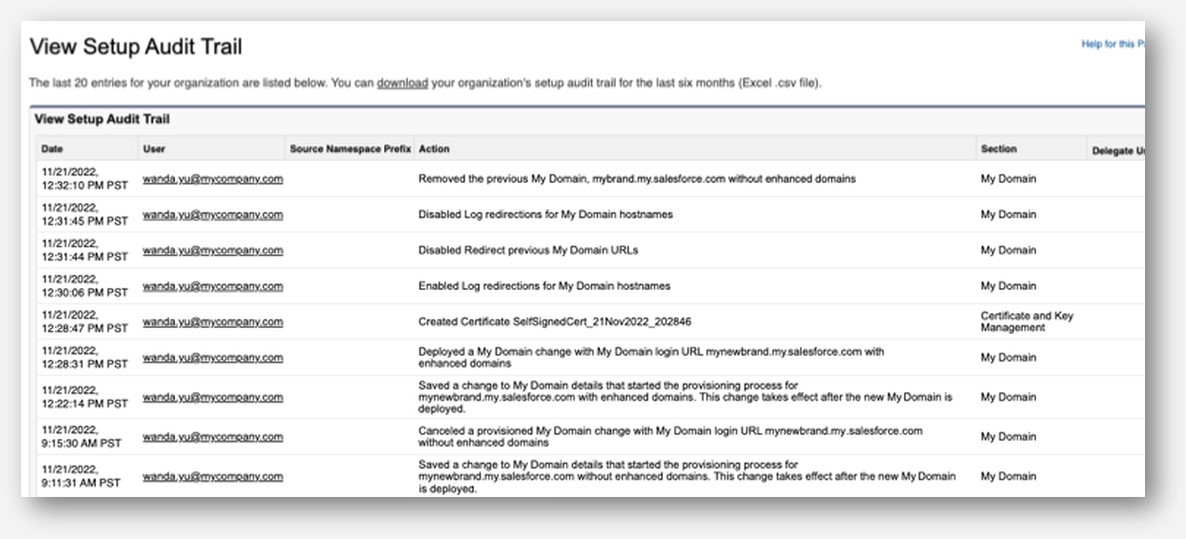

Test your IQ
Resolve this jumbled word:
K L L B R A T C A



Answer to Previous Question
Identify the English word hiding here, and which is this form of ‘writing’?


Answer: Mirketa (this form of writing = Ambigram)
Monitoring and Auditing tools in Salesforce
Contributor: : Sneha Bhupati
There are quite a few Monitoring & Auditing tools in Salesforce to help you keep your Salesforce org healthy, secure, operational & efficient. With these tools, Admins and developers can monitor the configuration and usage and troubleshoot errors. Also, they can report & block unusual user activity and/or set up notifications.
As an Architect, Admin, Consultant or Developer you need to be aware of these tools and should know when and how to make good use of them. The Auditing & Monitoring tools provided by Salesforce are both reactive and proactive.
For example,
if a user complains that the emails sent from Salesforce are not getting delivered to his or her clients then Debug Log and Email Log are the tools to use to troubleshoot. In this case you use these tools reactively i.e. after the event has already happened. Then there are tools that you can use proactively – like Transaction Security Policy that can be used to block the users from downloading say more than 100 contact records from Salesforce and also notify an administrator.
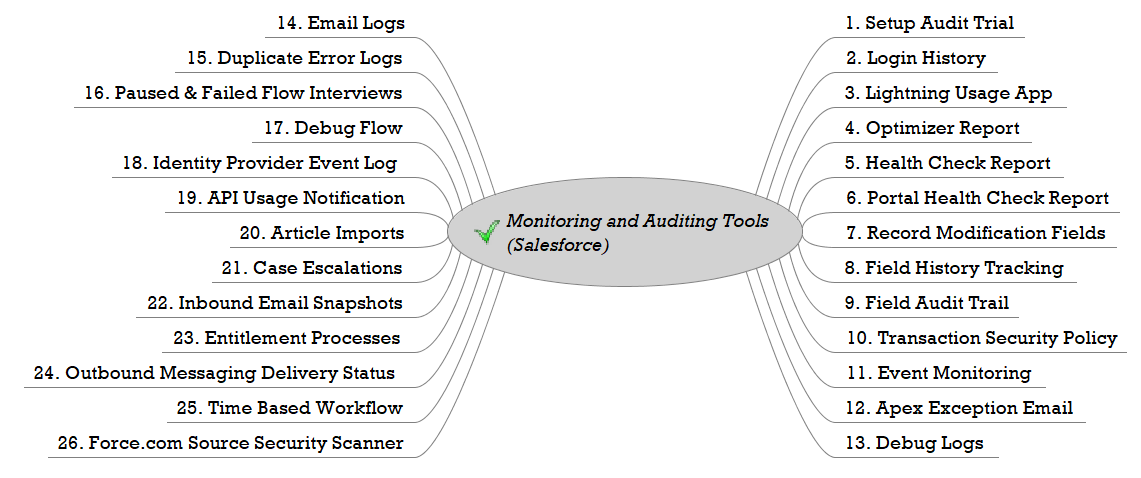

Test your IQ
One English word that describes these.


Answer to Previous Question
Resolve this jumbled word:
K L L B R A T C A



Answer: Trackball
Create Advanced Roll-Up Summaries using Flows
Contributor: : Basavaraja C
Inside the flow, now, create a new action and select MultipleSumsSOQLQuery. In the queryString box, create a new formula resource. This is where you write your SOQL. The raw text output of the formula will need to be the exact SOQL query. Since this query is built to give you up to 10 numbers, make sure your query has:
• Up to 10 aggregate functions, ordered in the same way you want to get the results back
• Aggregate functions that give a number back
Put all the SOQL query items in quotes, close the quotes and add the ‘&’s to add in variables, and then reopen the quotes for more text. Here’s an example of a correct SOQL query:
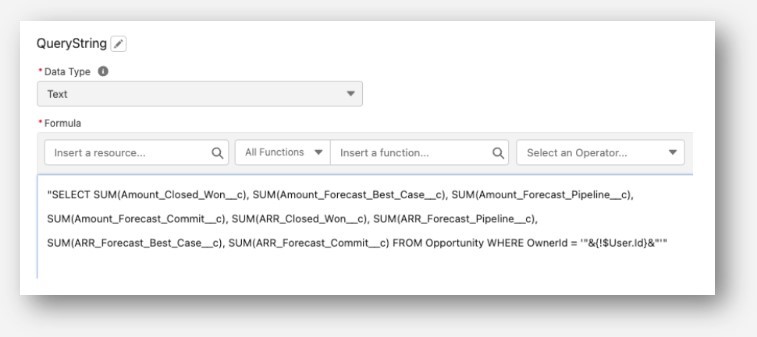

Test your IQ
Identify her.



Answer to Previous Question
One English word that describes these.


Answer: Oxymoron
Bulk Manage Picklist Values
Contributor: Ramya HS
You can now delete, activate, deactivate, or replace multiple custom picklist field values at once. Previously, you modified them one at a time. This feature is available only for custom picklists with predefined values. This feature is now generally available (GA)
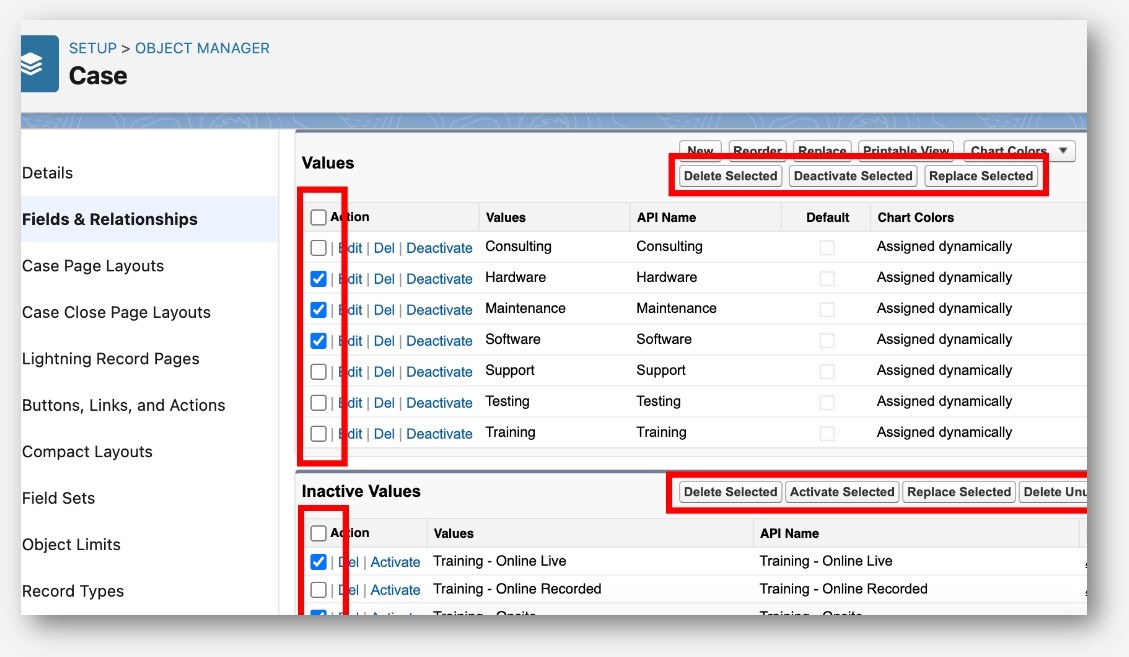

Test your IQ
Around ‘90s, Microsoft was using email server developed in Unix(!).
When a question was posed, why Unix, they shifted to their product for internal use ‘Microsoft Exchange Server’
So, the products that an enterprise develops, they should use that first and extensively
This concept is called _ _ _ _ _ _ Y O U R _ _ _ _ _ _ _ _ _ _.
Answer to Previous Question
Identify her.



Answer: Sridevi
Share records using 22 different ways!
Contributor: Anusha Reddy
If your OWD (Org-wide settings) is set to anything other than “public read/write”, then its more likely you might need to set some sharing rules to share the records to other users. At the outset, 22 ways to share. If you knew everything of these, you are the master in controlling the records visibility.
Keep this handy and implement sharing records in a most sensible / optimal fashion.
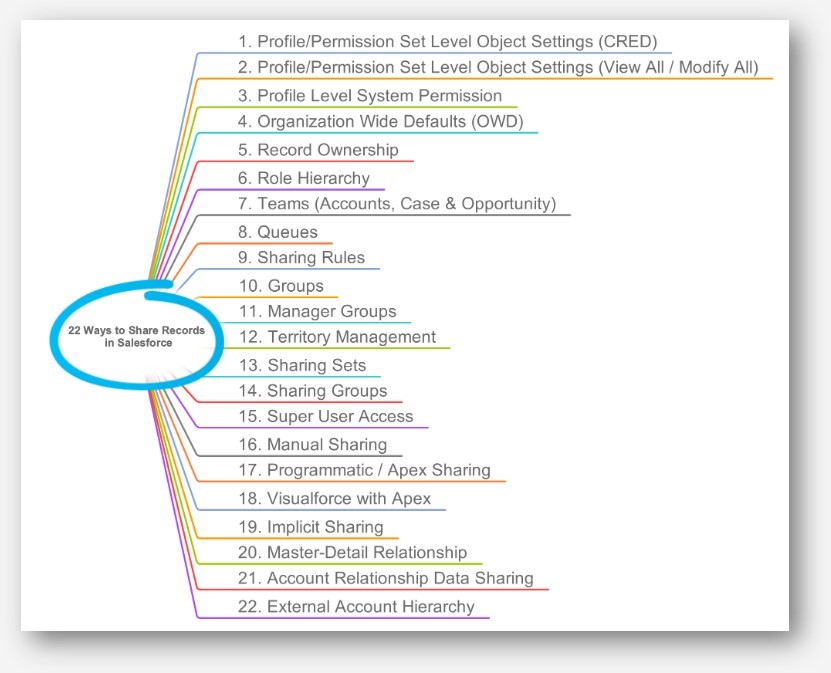

Test your IQ
Identify:


Answer to Previous Question
Around ‘90s, Microsoft was using email server developed in Unix(!).
When a question was posed, why Unix, they shifted to their product for internal use ‘Microsoft Exchange Server’
So, the products that an enterprise develops, they should use that first and extensively
This concept is called _ _ _ _ _ _ Y O U R _ _ _ _ _ _ _ _ _ _.
Answer: Eating Your Own Dog Food